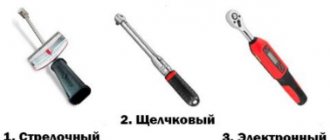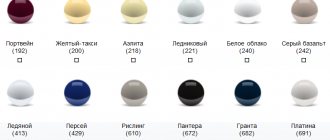During transition periods that threaten temperature changes, car owners need to check the condition of the cooling system. how to replace antifreeze in Toyota Camry 2.4 and others, regardless of experience and knowledge of the device and operation of the car.
Reasons for replacing antifreeze in a Toyota Camry
If all components of the machine are working properly, fuel consumption is within acceptable limits, then it is enough to conduct a visual inspection of the tank with the antifreeze level and the radiator located in the engine compartment. When inspecting them, attention should be paid to the main quality indicators:
- Liquid color. It should be bright without cloudy or faded shades. Manufacturers specifically add blue, red, green, and yellow dyes to their products so that the consumer can visually determine the condition of the antifreeze or, if necessary, purchase additional coolant for topping up. It is recommended to add antifreeze of the same color as the liquid in the system. Because according to the accepted international system, color characterizes the type of antifreeze. “Tosol” TL is also used as a coolant - this is a trademark of Soviet antifreeze.
To replace antifreeze on Camry 30 and 40, the TOYOTA automaker recommends using red liquids such as Long Life Coolant when replacing every 40 thousand km or once every 2 years or Super Long Life Coolant, the first replacement occurs after 160 thousand km, and subsequent ones every 80,000;
- Antifreeze consistency. The coolant should be a clean, clear liquid. No gel-like, flaky, or foamy states are acceptable. Also, pay attention to the presence of foreign objects. They can also signal problems with the system. Ultimately, dirt and transformed composition can damage the pump. Accordingly, we will get inevitable overheating of the engine;
- The inside surface of the radiator filler cap must be perfectly clean. If the system is working properly, only pure antifreeze can be present on it. If scale, dirt or any other foreign substances appear, you should urgently diagnose, fix the problem, flush the system and fill in with fresh antifreeze.
Types of antifreeze: what to fill in Toyota Camry 40?
Antifreezes are divided into types, depending on the composition of the product, which determines the nature of its use. The following types of coolants are classified:
- Traditional – contain a minimum amount of additives;
- Hybrid G-11 – represent a basic set of inorganic components, suitable for irregular or gentle use of the car;
- Carboxylate G12 or G12 plus - compositions developed for modern and high-speed engines, ideal for the Camry engine;
- Lobrid antifreeze G12++ or G13 are the most environmentally friendly and contain a lot of additional additives. Suitable for Camry, but are expensive.
It is forbidden to fill the Toyota Capri with distilled or purified water - this can lead to boiling of the engine or oxidation of the metal and the formation of chips. Protect your car - fill only with certified products!
It is important to know! You can only mix antifreezes of the same type, which are characterized by the composition of the product. Same color in coolants does not indicate product compatibility.
Instructions for replacing coolant
One of the main points in replacing antifreeze is the choice of the product itself. You shouldn't skimp on this. The cost of high-quality refrigerant is from 1,500 rubles and more per 10 liters. When purchasing you should pay attention to:
- color, it must match the car. Preference is given to red liquids;
- freezing temperature, it should not be higher than (-40 C) - (-60 C);
- country of origin. Of course, it is recommended to buy Japanese products. At the moment it is the highest quality;
- antifreeze class. There are several classes: G11, G12, G13. Their distinguishing feature is the service life of the antifreeze.
You can replace antifreeze on a Toyota Camry at a car dealership or do it yourself. If you decide to change it in the salon, then take care of choosing and purchasing antifreeze yourself to be sure of the quality of the product. If you decide to change the refrigerant yourself, then first read the manufacturer’s instructions and take into account all safety precautions, cool the machine before changing, put on a work uniform and gloves. So, you will need 25 liters of water, 6 liters of antifreeze and a tray. The composition of the refrigerant should also be taken into account. There are ready-made cooling liquids. And there are concentrates. To dilute the concentrate, you must strictly follow the instructions for use on the packaging; most often it is diluted in a ratio of 50x50.
Sequencing:
- Open the cap on the radiator and expansion tank;
- Install the pan under the engine and radiator;
- Unscrew the valves on the radiator and cylinder block, drain the antifreeze from the Toyota tank into the pan;
- Close the valves back;
- Flush the cooling system with water. Pour 5 liters of water into the radiator. Close the radiator and expansion tank caps. Start the car, press the gas pedal and warm up the engine until the fan comes on;
- Turn off the engine and drain the fluid, wait until the engine cools down;
- Repeat the procedure until the poured water becomes clear;
- Pour new fluid into the radiator with the engine cool. Start the car and operate the pedal until all air leaves the system. In Toyota Camry, the air comes out on its own;
- Then pour antifreeze for Toyota Camry into the expansion tank to the special mark;
- Close all covers. Remove the tray.
When should coolant be changed?
The volume and quality of antifreeze are characteristics that affect the technical condition of a vehicle engine. It is important to monitor the level and condition of antifreeze in order to make timely adjustments. Coolant replacement is required in the following cases:
- The presence of metal shavings or dirt in the liquid;
- The appearance of turbidity or sediment formation;
- The occurrence of chips or scale inside the motor space;
- During a technical inspection with a refractometer;
- If the results on the diagnostic test strip are appropriate.
It is also necessary to change the coolant after a major engine overhaul or the expiration date of the antifreeze. It is recommended to change antifreeze every five years or after 250 thousand kilometers.
Toyota Camry engine maintenance
As part of engine maintenance, it is recommended:
- tighten drive belts every 20 thousand km (replace them together with rollers - every 100-150 thousand km);
- measure valve clearances every 80-100 thousand km;
- replace engine oil every 10 thousand km (together with the oil filter);
- install a new fuel filter every 80 thousand km;
- change spark plugs every 100 thousand km.
- change the coolant every 150 thousand kilometers (check the level and top up if necessary - every 20 thousand);
- check the performance of sensors and automatic systems every 50 thousand km.
It is worth noting that the car needs to periodically check the cooling system for leaks (approximately once every 20 thousand kilometers). Frankly, it is not the weak point of the machine, but malfunctions still occur.
Replacing antifreeze - perform the procedure correctly!
Filling with coolant is a normal situation, which does not result in any particular difficulties or the need to use special tools. In order to correctly carry out the procedure for replacing antifreeze, it is recommended to adhere to the following instructions:
- It is necessary to install a container under the radiator to drain the liquid. The container should have a volume of 10-12 liters. Then we relieve the pressure in the cooling system. To do this, in a Toyota Camry you need to turn the expansion tank cap counterclockwise.
- Slowly opening the valves, pour the liquid into the supplied pan. In addition to the expansion tank, antifreeze also needs to be drained from the radiator and cylinder blocks of the Camry by unscrewing the drain plugs in the appropriate places.
- Based on the color of the drained liquid, we determine the need for flushing the engine system. The presence of metal husks, dirt or lumps of oil indicate that the engine is dirty, and if the fluid does not drain at all, then it is necessary to check the drain valves for blockages.
- If necessary, we rinse the engine systems with technical alcohol or specialized products for Toyota Camry, then close all the plugs from the bottom and pour new antifreeze through the filling holes.
- After completing the procedure, start the engine and leave the car idling for 10-15 minutes. As the volume of antifreeze in the engine decreases, it is necessary to add new one, guided by the position of the liquid on the marks. This procedure is necessary so that the coolant is evenly distributed throughout the entire engine system and loses air bubbles.
- After bleeding the air, tighten all the holes and check the tightness. The engine should not leak, and the drain plugs should not foam or bubble.
More detailed information about the coolant replacement procedure can be obtained by watching the accompanying video on the website.
What to do if air gets into the cooling system?
If, when replacing antifreeze in a Toyota Camry, air gets into the cooling system, you must allow the engine to warm up well so that the radiator fan turns on. You should operate the pedal for about 5 minutes. The air itself will leave through the exhaust lines from the cooling system. In Toyota Camrys, the air leaves on its own and this is a big advantage when replacing coolant.
You can replace antifreeze yourself; you don’t need special tools, but you need to be prepared with information:
- Replacing the refrigerant takes a minimum amount of time;
- It is recommended to replace only with high-quality red liquids, and not to skimp on the product;
- Allows you to save on maintenance at the car dealership.
Alexei
Mikhail, good afternoon! As far as I understand, the original antifreeze comes in two types LLC (red) and Super LLC (pink). 1. I would like to know the timing of replacing both fluids. 2. What can be added to pink antifreeze (concentrate or ready-made solution)? 3. Do I understand correctly that the red antifreeze is ethylene glycol based, and the pink one is carboxylate based (judging by the extended replacement period relative to the red one) 4. Crown car 99, LLC sticker, what antifreeze do you recommend using with a full replacement?
Car Toyota Camry 12.2003. I noticed that there is not enough fluid in the expansion tank. For topping up, I bought Toyota Long Life coolant antifreeze (concentrated red), diluted it and added 200-300 g. Then (unfortunately, what later) I carefully read the manual again, and Toyota Super Long Life Coolant antifreeze is listed there. Questions: How critical is such mixing for the engine (and will it be necessary to shorten the antifreeze replacement interval), and how often does antifreeze change in Russian conditions (according to the manual, 160 thousand km, in this conference it once slipped that once every 40 thousand) .
Dear Dmitry! Camry contains both super (it’s pink) and regular “long live” (it’s red) antifreeze. Super is inconvenient because not only cannot you add other antifreezes, but also water. When mixed with other antifreezes, pink antifreeze can curdle with all the ensuing consequences. If this did not happen to you, either red was poured in, it is chemically compatible even with blue, or the additive was very insignificant or the contents of the expansion tank did not mix with the rest of the cooling system. In any case, it is better to replace the antifreeze and not take risks. In addition, you should pay attention to the reason for the decrease in level. Unfortunately, on cars with plastic parts, their destruction often occurs, followed by leakage of antifreeze. For a Camry, this is most often the lower radiator tank. It is replaced under warranty along with antifreeze. Good luck, Mikhail.
Dear Dmitry! The initiative for such a check belongs to Toyota Motor. There is a suspicion that the spline connection bolt is installed incorrectly, past the flat. Of the cars that we checked, the defect was not confirmed and replacement was not required. This operation can be carried out at any official dealer; at least we take “other people’s” cars. Good luck, Mikhail.
Toyota recommends only one type of fluid: coolant concentrate with an extended replacement period: - 08889-80015 1 liter - 08889-80014 5 liter - 08889-80017 60 liters, and whether it is red or pink depends only on the amount of water you dilute when replacing it. In our lane from rather red because with water 50/50, unless the previous owner diluted it with water to compensate for leaks. buy 3.5 liters of concentrate, the rest is water. And all will be well. It is necessary to add more than a glass of distillation to the system per year only in case of malfunction. Look for the reason.
This is what the officials found out. Original Toyota antifreeze comes in red and pink. The red one is called Long Life Coolant, and the pink one is called Super Long Life Coolant. “It’s super inconvenient because you can’t only add other antifreezes to it, but also water. When mixed with other antifreezes, pink antifreeze can curdle with all the ensuing consequences.” (c) Pink antifreeze is poured into cars of recent years of production. The replacement period for the pink (super) one is about 160 t.km., I don’t know the replacement period for the red one. And it’s not clear how to distinguish red from pink. I suspect that the pink one is carboxylate based (judging by the timing of replacement), like Liqui Moly. All in all there is some confusion :)
In short, it became somehow boring, there is no need to do anything in the car... Just add anti-freeze... I decided to add antifreeze, otherwise the tank was somehow near the minimum. I bought a red one - Toyota Long Life Coolant. The manual says Toyota Super Long Life Coolant, but I read that later. Having gotten used to the fact that antifreeze can be mixed by color, I didn’t worry too much, but I posted a question on the Nika-Motors forum. Good people said - they don’t mix, and categorically - change them urgently. I looked into the tank - and there the antifreeze curdled, sediment fell out and that's it. The result is 2000 rubles for replacing antifreeze. Moreover, I changed it in Kuntsevo - they couldn’t believe it, they forced me to change it by force. Moral - don’t add anything yourself, the dealers don’t know everything, and no one knows what’s in there. At 40 thousand, they change the antifreeze anyway to regular red.
Still, the antifreeze curdled, the post says that at first everything was fine.. Mikhail was right :) Can you describe the color in more detail? Or is it still difficult to determine by color? You write “For 40 thousand, they change the antifreeze anyway to regular red.” I don’t understand, the officials change any antifreeze to red, i.e. the one that doesn't fold? Do they do a complete replacement with flushing? By the way, now they sell both... Thank you. Regards, Alexey.
At first I didn’t notice, and you can’t see much in the tank, but after I received a response from Nika-Motors, I looked at it with passion, i.e. with a flashlight. I was unpleasantly surprised. The color of pink - I would call it more purple, as it was in the tuning table of Soviet color TV. It is strikingly different from red, even diluted in half, but they must be placed side by side in a transparent container. In Bitsa and Kuntsevo there was no super, they said that it was only poured at the factory, it was not for sale or for service. I changed antifreeze in Kuntsevo, they said that on all cars they change antifreeze on TO-40000 to regular red, Toyota Long Life Coolant. For a long time they couldn’t believe the fact that antifreezes don’t mix; they tried to dissuade him from replacing it. An interesting question (ask yourself, happy owners of new cars) - if the officials add antifreeze during maintenance, does anyone pay attention to which one?
In the Toyota Camry XV40, the engine cooling system (ECS) includes a radiator, fan, heat exchanger, centrifugal pump, thermostat and expansion tank. Failure of one of the system components will most likely lead to engine failure, which can lead to expensive repairs.
Therefore, you should regularly monitor the condition of the SOD and change the antifreeze in a timely manner, and it must be of exceptionally high quality. See the photo for how to replace coolant on a Camry V40.
Secrets and life hacks: extending the life of your car
It is necessary to pour antifreeze only into a switched off engine. It is also recommended to let the engine cool to the optimum temperature - opening the valve on the expansion tank when the engine is hot can cause a breakdown in pressure, resulting in scalding of the heated fluid. All drain plugs on the crankcase must be opened very carefully and slowly, gradually releasing the internal pressure.
Note! Before adding a new type of antifreeze, you must completely drain the old one and flush the car engine. This procedure will remove the remnants of old antifreeze and eliminate the protective oxidative layer on the metal surface.
You need to pour the flush into the engine, warmed up to operating temperature, so that the thermostat in the system opens and the flush begins to circulate through the cooling system. Due to the engine volume of 2.4 liters, about 7-8 liters of flushing fluid will be required.
Remember, timely replacement of antifreeze will significantly extend the life of the engine. Regular diagnostic checks and careful car care will ensure long and comfortable operation of the Toyota Camry. Protect your vehicle from breakdowns and overloads!
How much does it cost and what kind of antifreeze to use?
The manufacturer developed a special antifreeze “Toyota Super Long Life Coolant”.
Antifreeze is toxic, so be careful when working with it! In addition, change only when the engine is cool to avoid getting burned!
For a complete replacement, you can also use other coolants, product code LLC01236, a four-liter canister will cost 820 rubles. Bottle with a volume of 1 liter, catalog number LLC33145, price – 330 rubles. Patron “Antifreeze”, with the article number AFRED1PATRON. The price of a 1-liter canister, product code AFRED1PATRON, will be 240 rubles, and a five-liter canister with product code AFRED5PATRON will be 560 rubles.
Also, during the process of replacing antifreeze, you may need to replace the radiator cap. The original cover from Toyota, product code 1640131520 costs 780 rubles. A number of replacements “to match the original” are available: Masuma MOX202 – 170 rubles, Gates RC134 – 460 rubles, Metalcaucho 03605 – 150 rubles.
Prices are indicated for autumn 2017 for Moscow and the region.
Description of original Toyota antifreezes
There are currently two original Toyota antifreezes:
- Toyota Long Life Coolant;
- Toyota Super Long Life Coolant.
Until 2002, at the factory, Toyota cars were filled with predominantly the first antifreeze - LLC. Since 2002, it was replaced by a second one - Super LLC. Now it is this that is used in most models of this brand.
However, both antifreezes have a lot in common. Each of them is based on the highest quality propylene glycol, as well as powerful corrosion inhibitors and balanced modern additives. But everyone has their own, so mixing these two antifreezes is strictly prohibited. Otherwise, the mixture will be significantly inferior in quality to separately used coolants.
Despite the fact that Toyota cars now primarily use Super Long Life coolant for factory filling, its predecessor should not be written off. Antifreeze Toyota LLC can still be purchased for use in a personal vehicle, on sale and in containers of various sizes.
From a general point of view, it is also worth noting that both refrigerants are produced both as a ready-to-use coolant and as a concentrate. The latter is not suitable for use in its pure form; it must be diluted with water. How to dilute, in what proportion, depends on the climatic conditions in which the coolant is supposed to be used, and the maximum sub-zero temperature in the region. The optimal ratio, suitable even for the northern regions, is considered to be one to one. At the same time, protection will be provided to an average of minus 40 degrees Celsius. The minimum volume of concentrate should be one third of the total volume of liquid, and the maximum should be 70%.
It is best to mix concentrated antifreeze with distilled water, but if this is not available, you can also use tap water. Diluting the concentrate with water from rivers, lakes, and natural wells is strictly prohibited.
Important! If it is not possible to buy antifreeze recommended by the Toyota manufacturer, then analogues with the appropriate base and additive package can be used for replacement. It is better not to mix antifreezes from different manufacturers unless absolutely necessary; this can significantly deteriorate their characteristics and reduce their service life.
Both Toyota antifreezes have undergone numerous tests and tests, according to the results of which it can be stated that they comply with all manufacturer’s statements and international requirements and industry standards. Positive reviews from car enthusiasts confirm this.
Toyota Long Life Coolant
Ready-made liquid and concentrate LLC Toyota Long Life Coolant red antifreeze is a traditional propylene glycol-based antifreeze using high-quality additives and corrosion inhibitors.
Externally it is a clean, transparent red liquid. Toyota red antifreeze has good lubricating properties and has a high degree of protection of the cooling system from wear and corrosion. It has good heat dissipation properties and perfectly protects the engine from overheating and hypothermia.
Toyota Long Life Coolant antifreeze is suitable for use in the internal combustion engines of both Toyota trucks and passenger cars. Antifreeze is replaced after three years during the initial fill, and every two years for subsequent fills.
Articles and packaging volumes of LLC antifreeze:
- 08889-80015 – 1 l;
- 08889-80032 – 4 l;
- 08889-80014 – 5 l;
- 08889-80017 – 60 l.
If necessary, you can mix this antifreeze with silicate, hybrid coolants.
Toyota Super Long Life Coolant
Toyota Super Long Life coolant antifreeze is a ready-made antifreeze and concentrate produced on the basis of propylene glycol using organic acid (carboxylate) technology using powerful modern corrosion inhibitors. Its chemical composition does not contain silicates, nitrates and other harmful substances that negatively affect engine performance, impair heat transfer, and contribute to the formation of deposits inside the cooling system. They also cause harm to the environment. This means that this antifreeze is not only safe for the engine, but also environmentally friendly.
What to choose
Now we can discuss what kind of antifreeze to pour into Toyota. There is also no definite answer to this question, since each car owner will advise his own option. The most optimal and safest way is to use coolant according to the recommendations for your foreign cars; it recommends using a silicate-free liquid with an organic corrosion inhibitor based on propylene glycol.
Original Toyota products meet these requirements:
- LongLifeCoolant (LLC) red;
- Super Long Life Coolant (S LLC) pink;
Maintenance of Toyota Camry V50
Every owner of a Toyota Camry will have to undergo mandatory maintenance at a Toyota service station. You can make an appointment for maintenance by calling 8-800-200-57-75 (toll-free) or leaving a request online on the Toyota website. The addresses and telephone numbers of other official Toyota dealers in Russia can be found here.
The manufacturer recommends the following maintenance intervals for your vehicle: every 10,000 km or once every 365 days, whichever comes first. When I bought a car at Toyota Center Izmailovo, I was given a service book for the car, and was also given a savings card. Don't forget to take them to every maintenance service.
Toyota service book
Toyota savings card
What is checked in a car at every maintenance? What nodes are they looking at? What needs to be replaced?
Below is the main list of works and spare parts for maintenance recommended by the manufacturer:
P - check (adjustment, lubrication as necessary).
When carrying out maintenance, Toyota recommends using only original Toyota lubricants and technical fluids:
- Synthetic motor oil Toyota Genuine Motor Oil API SL SAE 5W-40
- Synthetic motor oil Toyota Genuine Motor Oil API SL SAE 0W-30
- Coolants “Toyota Super Long Life Coolant”*, “Toyota Long Life Coolant”**.
- Synthetic oil for manual transmissions Toyota Synthetic Gear Oil API GL4/GL5, SAE 75W-90
- Automatic transmission fluids Toyota ATF WS, Toyota ATF T-IV, Toyota ATF-DIII
- Toyota Brake Fluid DOT 4.
* “Toyota Super Long Life Coolant”. The cooling system of a new Toyota vehicle is filled with this type of coolant. The advantage of this fluid is the increased replacement interval, which is performed first at a mileage of 160,000 km, then every 80,000 km.
**Toyota Long Life Coolant.” In this case, replacement is carried out every 40,000 km.
Spare parts catalog for Toyoyta Camry V50
Spare parts Toyota Camry sedan VII 2.5 (2AR-FE)
Spare parts for maintenance of Toyota Camry sedan VII 2.5 (2AR-FE)
Numbers of original consumables on TO for Toyota Camry V50 (2AR-FE)
17801-28030 — air filter 87139-52020 — cabin filter 04152-31090 — oil filter 90430-12031 — sealing ring for drain plug 04465-33471 — front brake pads, set 04466-33200 — rear brake pads, set 43512-3314 0 — brake disc front
Toyota motor oil
08880-83265 — motor oil Toyota 0W-20 5l 08880-80845 — motor oil Toyota 5W-30 5l 08880-80365 — motor oil Toyota 0W-30 5l
Toyota coolants
08889-80014 — coolant concentrate with extended replacement period (volume 5 l) 08889-80015 — coolant concentrate with extended replacement period (volume 1 l) 08889-80017 — coolant concentrate with extended replacement period (volume 60 l) 08889-80014 — concentrate coolant (antifreeze) Long Life (Red) (volume 5 l) 08889-80015 — coolant concentrate (antifreeze) Long Life (Red) (volume 1 l) 08889-80072 — coolant Super Long Life -35C (pink) (volume 5 l )









